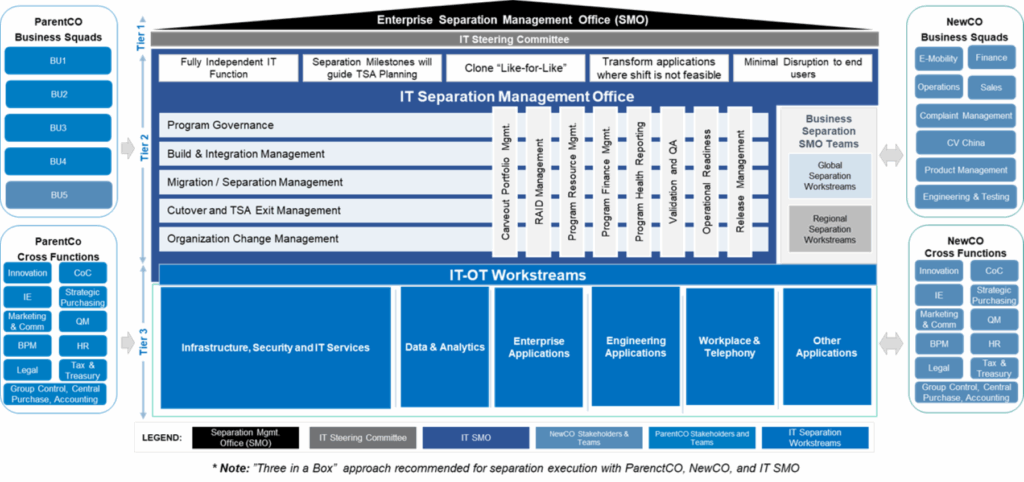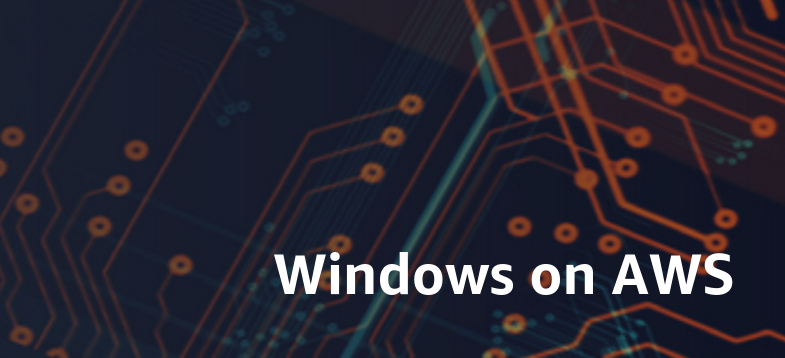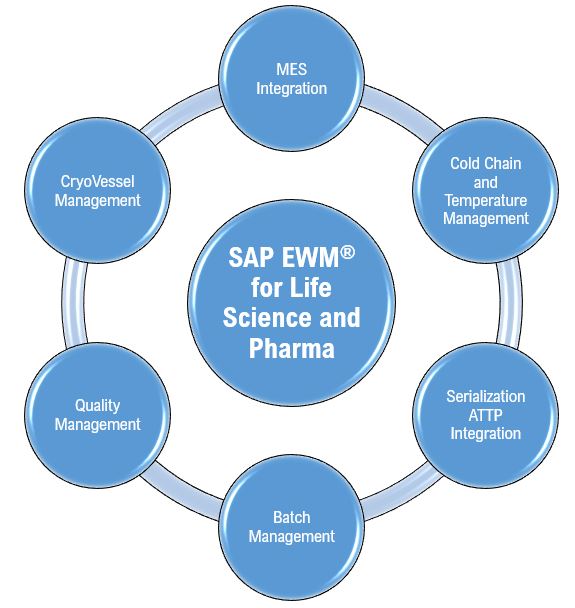IT divestitures are among the most complex and high-stakes transformations an enterprise can undertake. They involve disentangling deeply integrated systems, processes, and data—often under tight timelines and regulatory scrutiny. Without disciplined governance, organizations risk delays, cost overruns, and operational disruptions.
This blog presents a three-tier governance framework that enables strategic alignment, program control, and execution discipline. The model is designed to ensure Day‑1 readiness, business continuity, and timely TSA exits through structured delivery, rehearsed cutovers, and integrated reporting.

Tier 1: Steering Committee (SteerCo)
· Provides strategic oversight and executive sponsorship
· Approves budgets, timelines, and major decisions
· Adjudicates escalated risks and change requests
Tier 2: IT Separation Management Office (IT SMO)
· Acts as the program control tower
· Integrates cross-functional plans and dependencies
· Enforces standards, quality gates, and reporting cadence
Tier 3: Domain Workstreams
Execute separation activities across IT and OT domains:
· Infrastructure & Security
· Enterprise Platforms (ERP, CRM)
· Data & Analytics
· Engineering/OT Systems
· Workplace & Collaboration
· Other Applications
Objectives and Design Principles
· Clear Decision Rights: Defined roles and escalation paths across strategic, tactical, and operational layers
· Business Continuity: Risk-based planning with rollback strategies
· Integrated Reporting: Unified view of scope, schedule, cost, risk, and TSA progress
· Standardized Delivery: Use of playbooks, RACI matrices, templates, and reusable assets
· Accelerated Independence: Parallel wave execution and proactive change management
Operating Model and Governance Layers
Each governance tier has distinct responsibilities and decision rights:
· SteerCo: Strategic decisions, budget approvals, risk adjudication
· IT SMO: Program orchestration, dependency management, standards enforcement
· Workstreams: Tactical execution across business and technology domains
Key Functions of the IT SMO
1) Program Governance
· Establish operating rhythm and decision protocols
· Produce integrated plans, budgets, and RAID logs
· Define quality gates and acceptance criteria
· Manage scope via change control and impact analysis
· Ensure compliance and executive reporting
2) Build & Integration Management
· Standardize infrastructure and security patterns
· Coordinate application configuration and middleware
· Enforce configuration management and rollback plans
· Align non-functional requirements and performance baselines
3) Migration and Separation Management
· Apply stage-gated lifecycle: profiling, cleansing, staging, validation, controlled load
· Ensure data integrity and allocation controls
· Plan for historical data retention under regulatory requirements
4) Cutover and TSA Exit Management
· Run wave-based cutovers with command center governance
· Execute rehearsals, go/no-go checkpoints, and blackout windows
· Track TSA exit progress against technical, functional, and commercial criteria
5) Organization Change Management (OCM)
· Drive stakeholder alignment and user readiness
· Use PREPARE → PERSONALIZE → ENGAGE → ENABLE → COMMUNICATE → SUSTAIN model
· Measure adoption through training completion and usage analytics
KPIs and Definition of Done
· TSA Exit Achievement: Technical, functional, and commercial milestones
· Wave On-Time Delivery: Schedule adherence and defect escape rate
· Cutover Effectiveness: Go/no-go compliance, rollback avoidance, blackout duration
· User Readiness: Training completion and adoption metrics
· Security Posture: Identity cutover success and endpoint compliance
Completion Criteria:
· Day‑1 services are stable and operational
· TSA services exited or consciously renewed
· Documentation, KT, and SLAs signed
· Risks retired or accepted
· Benefits and lessons learned baselined
Conclusion
A divestiture succeeds when governance transforms complexity into a predictable operating rhythm. The three-tier model, reinforced by runbook discipline, TSA-anchored planning, and people-centric change management, ensures Day‑1 certainty and Day‑2 value—regardless of geography, vendor mix, or technology stack.








